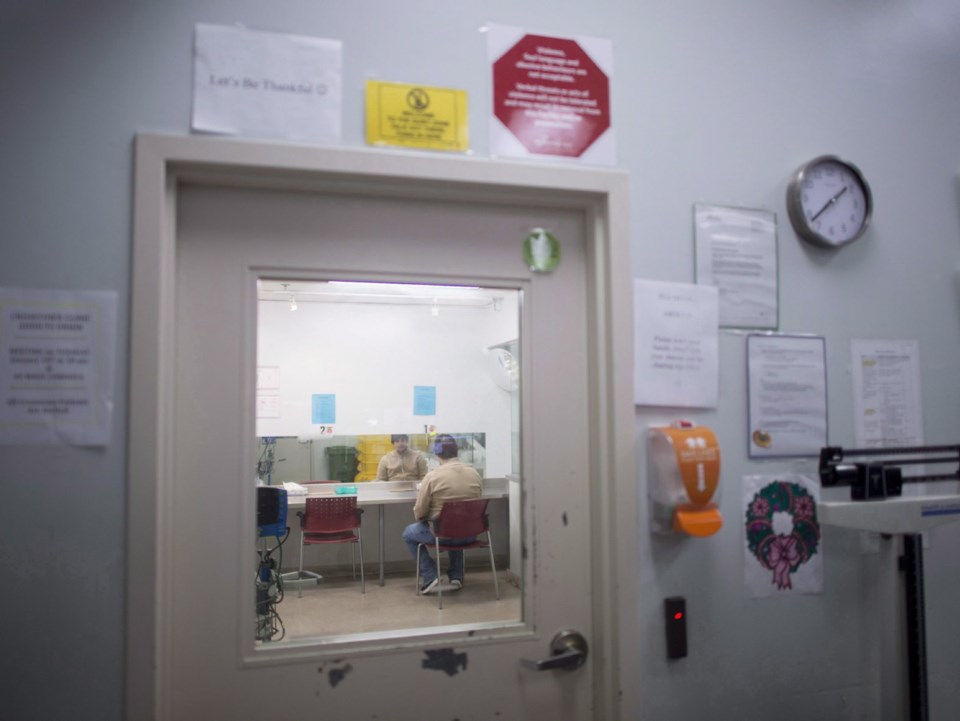 You can tell how sensitive the topic is by how gingerly provincial health officer Dr. Perry Kendall raised it.
You can tell how sensitive the topic is by how gingerly provincial health officer Dr. Perry Kendall raised it.
At last month’s alarming update on how overdose fatalities are skyrocketing despite considerable efforts to curb them, Kendall pitched another approach.
He was talking about the subset of addicts who seem immune to treatment programs. In Europe, he said, five to 10 per cent of people in treatment can access “a broader range of opioid agonist [replacement] treatments than is available to only a small number of people in Canada.”
“These treatments, while very controversial in North America, do work.”
In subsequent interviews, he got more specific — he wants to supply longtime users with clean medical heroin or its equivalent and a safe place to inject.
Since most of them would be on subsidized Pharmacare, the concept is this: free heroin prescriptions to addicts for whom nothing else has worked.
“This crisis is an opportunity for dialogue on how to create a regime in which human frailty, experimentation and dependence are acknowledged and addressed through evidence-based interventions,” Kendall said. “Such a dialogue may not be easy, but it is necessary and it will be life-saving.”
That idea takes the established harm-reduction model to a whole new level. The question is whether the B.C. government is ready to take that next step.
Health Minister Terry Lake is non-committal about the idea. It’s already in effect to some extent on Vancouver’s Downtown Eastside, where about 150 users for the past few years have had access to clean medical heroin and a similar drug. It’s considered experimental at this point, and the clinic that oversees the program operates on a research exemption from federal law.
The debate about expanding it has been underway for some time. But Kendall tried to restart it after the “unexpected and disheartening” year-end statistics from the coroners’ office were released.
The month-by-month overdose deaths climbed dramatically toward the end of last year, and the 2016 total is the highest ever.
The arguments in favour of providing free heroin to the hardest-to-treat subset include that it’s a lifesaver — that group is most vulnerable to fentanyl.
Proponents say it would save money as well, since fentanyl emergencies and overdoses in general are stretching first responders to the limits.
But there are taxpayers who despair at the self-inflicted nature of the crisis and aren’t ready to endorse taking harm-reduction to the point of supplying people with the drugs they crave. There’s likely a few B.C. Liberal caucus members who share that view.
Lake told the Vancouver Sun’s Rob Shaw he’s ready to have the conversation but is concerned about a negative backlash.
“These ideas need some socialization.”
The government took a small step in that direction in response to the growing death toll. As of today, it is providing 100 per cent coverage for opioid substitution therapies to those eligible under the psychiatric medications program. That means no-cost naloxone (an overdose antidote) or methadone (a opioid substitute) to anyone with an annual income under about $42,000.
The worse the crisis gets, the more radical the proposed solutions get.
Just So You Know: Victoria never fails to astound me. I hosted the annual toast to Sir Winston Churchill at his tree in Beacon Hill Park on Sunday, and was delighted when Olive Bailey dropped by.
She has been featured in this newspaper a few times for her wartime career as one of those young women who worked as codebreakers at Bletchley Park with the famed Alan Turing.
Cracking the Nazi codes was a major chapter of the Second World War, and all involved were sworn to the highest secrecy. Bailey, a young mathematics whiz, kept mum about it for decades. In fact, she only mentioned it to her husband about 15 years ago.
Now 95, she told our crowd a story about the secrecy being so paramount that when Churchill was touring the facility once, Turing and Bailey were working in a room off-limits to everyone, including the prime minister.
“So Alan saw Winston coming and stretched his leg out and kicked the door shut.”
There are very few places in the world where you can hear a first-person story like that.



